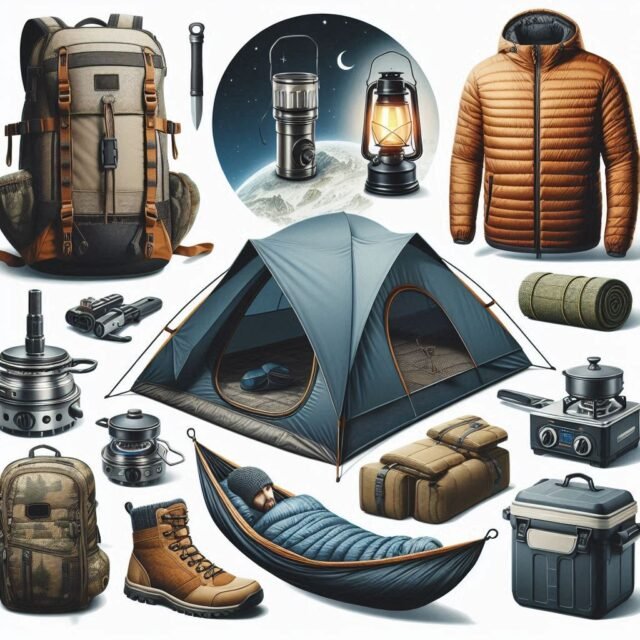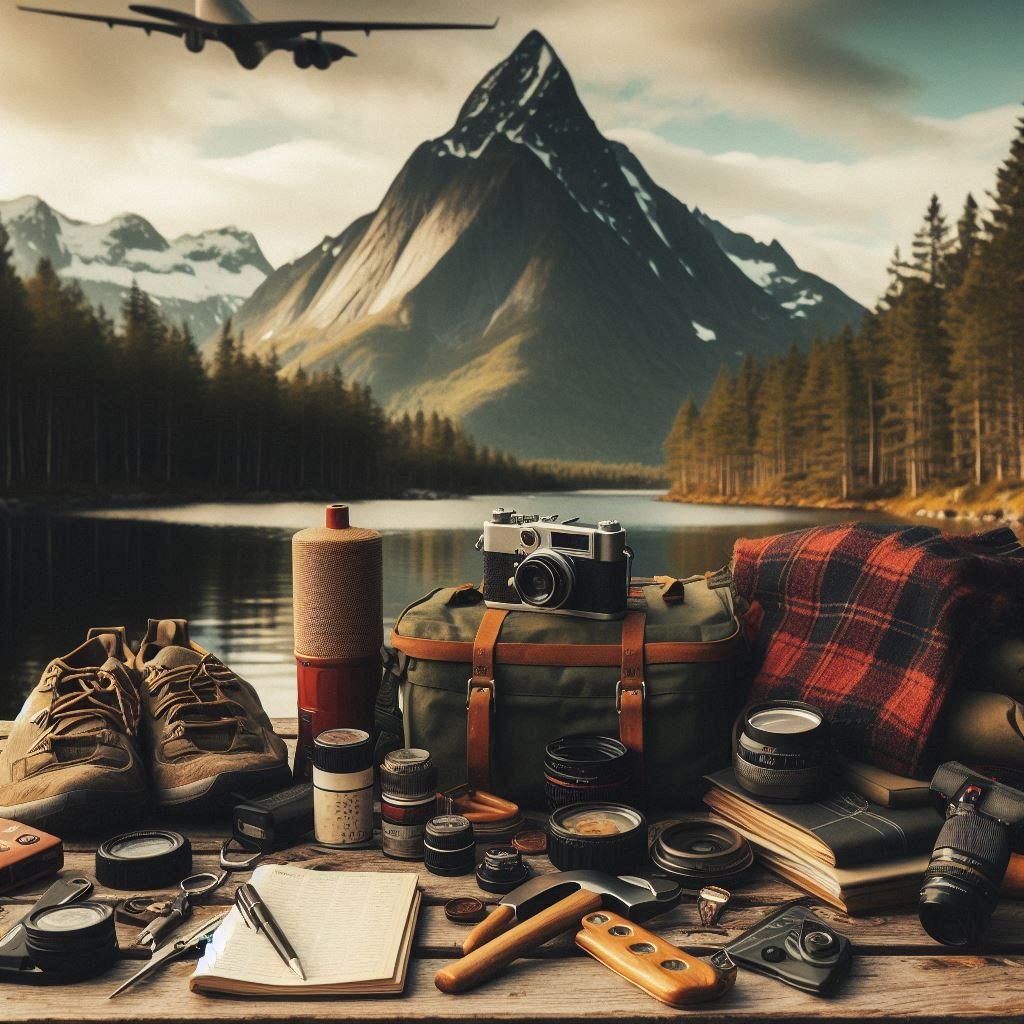Gearing Up for the Wild: Your Ultimate Packing List for Unforgettable Backcountry Expeditions
Embarking on a remote adventure is a thrilling experience that offers unparalleled opportunities to connect with nature, challenge yourself, and create lasting memories.
However, venturing into the wilderness requires careful preparation and the right equipment to ensure your safety and comfort.
This OTL guide will walk you through the essential gear you need for remote adventures, providing valuable insights, deals and tips to help you make the most of your outdoor experience.
1. The Backbone of Your Adventure: A High-Quality Backpack
Your backpack is more than just a bag; it’s your mobile home in the wilderness. Choosing the right one can make or break your adventure. When selecting a backpack, consider the following:
– Capacity: Choose a size appropriate for your trip length, typically ranging from 30-50 liters for weekend trips to 60-80 liters for extended expeditions.
– Fit: Ensure the pack fits your torso length and hip size for optimal comfort and weight distribution.
– Features: Look for adjustable straps, multiple compartments for organization, and external attachment points for gear.
– Material: Opt for durable, water-resistant fabrics like ripstop nylon or Dyneema composite fabric.
– Frame: Internal frame packs offer better balance and stability for most hikers.
Remember, the best backpack is one that feels comfortable even after hours on the trail. Don’t hesitate to try on multiple options and even test them with weight before making your final decision.
2. Your Home Away From Home: Reliable Shelter
A good shelter is crucial for protection against the elements and a restful night’s sleep. Consider these options:
– Tents: Lightweight, freestanding tents are versatile and easy to set up. Look for models with a good balance of weight, durability, and weather resistance.
– Bivy Sacks: These minimalist shelters are ideal for solo travelers prioritizing weight savings over comfort.
– Hammocks: In forested areas, hammocks with rain flies can be a comfortable and lightweight option.
When choosing a shelter for remote adventures, consider the climate, terrain, and duration of your trip. Always practice setting up your shelter before your adventure to ensure you can do it quickly and efficiently in the field.

3. Sweet Dreams in the Wild: Sleeping Gear
Quality sleep is essential for maintaining energy and morale during your adventure. Invest in:
– Sleeping Bag: Choose a bag rated for temperatures lower than you expect to encounter. Down bags offer the best warmth-to-weight ratio but perform poorly when wet, while synthetic bags maintain insulation when damp.
– Sleeping Pad: This provides insulation from the cold ground and adds comfort. Consider inflatable pads for better insulation and comfort, or closed-cell foam pads for durability and quick setup.
– Pillow: An inflatable pillow can significantly improve sleep quality without adding much weight to your pack.
4. Finding Your Way: Navigation Tools
In remote areas, reliable navigation is crucial for safety and enjoyment. Equip yourself with:
– GPS Device: Modern GPS units offer detailed maps, tracking features, and long battery life. Some even include satellite messaging capabilities.
– Compass and Maps: Always carry these as a backup. Learn how to use them together for triangulation and route-finding.
– Altimeter: This can help you verify your location and anticipate weather changes.
Before your trip, familiarize yourself with these tools and practice using them in familiar territory. Remember, technology can fail, so knowing how to navigate with a map and compass is an invaluable skill.
5. Quenching Your Thirst: Water Filtration System
Access to clean water is critical in the backcountry. Consider these options:
– Pump Filters: Effective for large quantities of water but can be bulky.
– Gravity Filters: Great for group trips and base camps.
– Squeeze Filters: Lightweight and versatile for personal use.
– Chemical Treatments: Tablets or drops are a lightweight backup option.
Always research the water sources along your route and carry enough capacity to transport water between reliable sources.
6. Fueling Your Adventure: Cooking Equipment
A hot meal can be a tremendous morale booster in the wilderness. Essential cooking gear for remote adventures includes:
– Stove: Canister stoves are user-friendly and efficient for most trips. Liquid fuel stoves perform better in cold conditions and at high altitudes.
– Cookware: Lightweight, nesting pots and pans made from titanium or anodized aluminum are ideal.
– Utensils: A long-handled spoon and a mug can cover most needs.
– Fire Starter: Waterproof matches, a lighter, and/or a ferro rod for backup.
Don’t forget to calculate and pack enough fuel for your entire trip, plus a little extra for emergencies.
7. Safety First: First Aid Kit
A well-stocked first aid kit is essential for addressing minor injuries and managing more serious situations until help arrives. Your kit should include:
– Bandages and gauze
– Antiseptic wipes and ointment
– Pain relievers and anti-inflammatory medication
– Blister treatment supplies
– Personal medications
– Emergency blanket
Customize your kit based on your group size, trip duration, and any specific medical needs. Additionally, consider taking a wilderness first aid course to build your skills and confidence.
8. The Ultimate Tool: Multi-Tool or Knife
A quality multi-tool or knife is indispensable in the backcountry. Look for features like:
– Sharp blade
– Can opener
– Pliers
– Screwdrivers
– Scissors
Opt for a sturdy, reliable brand and familiarize yourself with all its functions before your trip.
9. Dressing for Success: Weather-Appropriate Clothing
Proper clothing can mean the difference between an enjoyable adventure and a miserable (or even dangerous) experience. Follow the layering principle:
– Base Layer: Moisture-wicking materials like merino wool or synthetic fabrics to keep your skin dry.
– Insulating Layer: Fleece or down for warmth.
– Outer Layer: Waterproof and breathable jacket and pants for protection from wind and rain.
Don’t forget essential accessories like a warm hat, gloves, and extra socks. Always pack for the worst weather you might encounter, even if the forecast looks favorable.

10. Illuminating the Night: Lighting
Reliable lighting is crucial for safety and navigation after dark. Consider:
– Headlamp: Hands-free operation makes this the top choice for most activities.
– Flashlight: A small, backup light is always a good idea.
– Lantern: Optional for ambient light in camp.
Always pack extra batteries and consider rechargeable options with portable solar panels for extended trips.
11. Staying Connected: Communication Device
In remote areas, the ability to call for help can be life-saving. Options include:
– Satellite Phone: Allows voice calls and sometimes text messages from almost anywhere.
– Personal Locator Beacon (PLB): Sends an emergency distress signal with your location to search and rescue services.
– Satellite Messenger: Offers two-way text communication and GPS tracking.
While these devices provide an important safety net, remember that they are not a substitute for proper planning and self-reliance skills.
12. Hydration on the Go: Water Carrying System
Staying hydrated is crucial for performance and safety. Consider:
– Water Bottles: Durable and reliable, available in various sizes and materials.
– Hydration Bladder: Convenient for drinking on the move, but can be prone to leaks.
Choose a combination that works for your activity and climate, ensuring you have enough capacity to carry water between sources.
13. Fuel for the Journey: Food Supplies
Proper nutrition is key to maintaining energy and morale. Pack a variety of:
– Dehydrated meals: Lightweight and easy to prepare.
– Energy bars and gels: Quick calories for on-the-go energy.
– Trail mix and dried fruits: Nutrient-dense snacks.
– Electrolyte powders: To replace minerals lost through sweat.
Plan your meals carefully, accounting for the increased calorie needs of backcountry travel.

14. When Things Go Wrong: Emergency Shelter
An emergency shelter can be a lifesaver in unexpected situations. Options include:
– Emergency bivy sack: Ultralight and compact.
– Space blanket: Reflects body heat and provides wind protection.
– Tarp: Versatile for creating shelter in various configurations.
These items are lightweight insurance against unforeseen circumstances and should always be part of your kit.
15. Be Prepared: Repair Kit
A basic repair kit can help you address gear failures in the field. Include:
– Duct tape
– Zip ties
– Tenacious tape for patching tears
– Needle and thread
– Spare parts specific to your gear (e.g., tent pole repair sleeve, stove maintenance kit)

FAQ: Discover Essential Gear for Remote Adventures
What kind of remote adventures does this guide apply to?
This guide offers gear recommendations for various remote adventures, including backpacking, thru-hiking, wilderness camping, and off-grid expeditions.
How do I determine the specific gear I need for my trip?
The specific gear you need depends on several factors:
- Destination: Research the climate, terrain, and potential hazards of your chosen location.
- Duration: Longer trips necessitate more supplies.
- Activity Level: Strenuous activities require lighter, more technical gear.
- Skill Level: Be honest about your experience and choose gear that matches your abilities.
What are some essential gear categories to consider?
- Shelter: Backpack, tent, sleeping bag, sleeping pad.
- Navigation: Map, compass, GPS device (with backup batteries).
- Sun Protection: Sunglasses, sun hat, sunscreen.
- Hydration: Water bottle or hydration bladder, water purification tablets or filter.
- Food: Trail mix, dehydrated meals, energy bars, stove and fuel (if applicable).
- Clothing: Layers for different weather conditions, sturdy footwear, rain gear.
- First-Aid Kit: Be prepared for minor injuries and blisters.
- Emergency Essentials: Headlamp, whistle, fire starter, emergency shelter (bivy sack).
I’m a beginner. Are there any additional tips?
Absolutely! Here are some bonus tips for new adventurers:
- Start with shorter, closer-to-home trips to test your gear and skills.
- Invest in good quality, multi-purpose gear to save weight and space.
- Learn basic survival skills like navigation, fire building, and first aid.
- Inform someone about your trip itinerary and expected return date.
What if I have questions about specific gear choices?
Consult a reputable outdoor retailer or research online reviews. There are also many online forums and communities dedicated to wilderness activities where you can connect with experienced adventurers.
Remember, the most important gear is your knowledge and preparation!

Preparing for remote adventures requires careful consideration and investment in quality gear.
While the initial cost may seem high, reliable equipment enhances your safety, comfort, and overall enjoyment of the wilderness experience.
Always remember, the most important piece of gear is your knowledge and skill. Take the time to learn and practice outdoor skills, understand Leave No Trace principles, and always inform someone of your plans before heading out.
With the right gear and preparation, you’re ready to embark on unforgettable journeys into the heart of nature. So pack your bag, lace up your boots, and step into the great unknown.
Adventure awaits!
Resources for Your Remote Adventure:
- Leave No Trace Principles: https://lnt.org/the-7-principles-of-leave-no-trace-winter-recreation/ – Learn how to minimize your impact on the wilderness.
- National Park Service Trip Planning: https://www.nps.gov/planyourvisit/index.htm – Plan your adventure in a National Park with comprehensive resources.
- American Hiking Society Safe Hiking Tips: https://americanhiking.org/resources/summer-safety-series/ – Essential safety information for all levels of hikers.
- Ready.gov – Be Prepared for Anything: https://www.ready.gov/ – Get prepared for emergencies and unexpected situations.




Leave a Reply